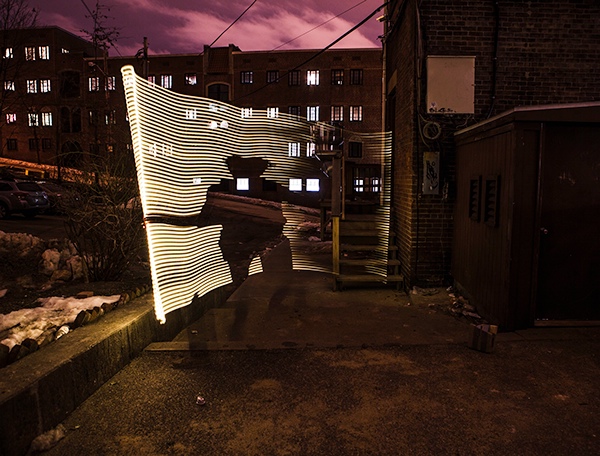| A whole pile of potential. Stock cut for seven frames. |
I chose a thin, contemporary molding for my show at Roberts Wesleyan’s Davison Gallery, because it’s a sleek, contemporary space. I had a feeling this frame stock might be somewhat slender for such large pictures, so it was no big surprise when I released the clamp from the first frame I’d glued and the joints peeled apart in my hand. No matter how strong the glue, wood is heavy and a tiny contact surface can’t support a lot of weight. (Frame shops use V-nailers or underpinners to join miters, but they start at around $1200, so aren’t appropriate for the casual framer. And in most cases, glue is sufficient.)
We’re a one-car family and my husband was off playing his bass. That might have been a real problem, but I was saved by technology. I visited a big box store’s website, identified the correct flat corner braces, found a store that had enough of them in stock, and bought them online. They texted my husband’s phone when the order was ready for pickup. He collected them on his way home. It was a matter of two hours to install the plates, and now I’m relatively certain that these frames could survive a minor earthquake.
| Interestingly, the depth of the molding wasn’t even from piece to piece, but as long as the mending plate was the same distance from the edge, I was happy. |
I’ve posted about how to make frames before. If you can cut an accurate 45° angle (which is as much about having a good saw as it is about having woodworking skills) you can make decent frames in a home workshop. Affixing mending plates to a thin molding is a bit trickier, because they must be aligned perfectly so that they don’t show from the front and don’t impede installing the painting from the back. The only way I know how to do that is by careful marking and drilling pilot holes.
Despite the supports, I’ll affix the hangers to the stretchers, not the frames. No sense tempting fate.
Let me know if you’re interested in painting with me in Maine in 2014 or Rochester at any time. Click here for more information on my Maine workshops!
















